|

On eBay Now...
2 Alexandrite Tanzanian 1/3ct Purple to Pink Natural Color Change Russia Handcut For Sale
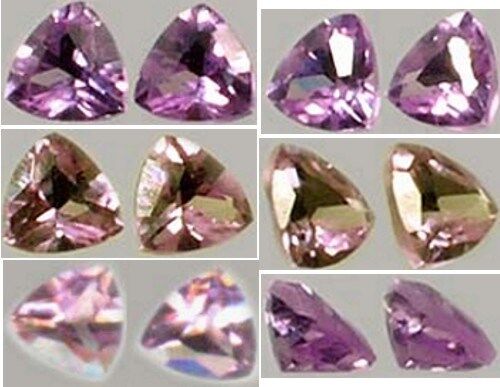
When you click on links to various merchants on this site and make a purchase, this can result in this site earning a commission. Affiliate programs and affiliations include, but are not limited to, the eBay Partner Network.

2 Alexandrite Tanzanian 1/3ct Purple to Pink Natural Color Change Russia Handcut:
$329.99
High Quality Genuine Natural Russian Handcrafted Tanzanian Purple to Pink Color Change Faceted "Trillion" Cut Alexandrite Precious Gemstones. CLASSIFICATION: “Trillion” Cut Faceted Alexandrite Gemstones. ORIGIN: Tanzania; Handcrafted in Yekaterinburg, Russia. SIZE: “Diameter”: 3mm. Thickness (Depth): 2mm. All measurements approximate. WEIGHT: Approximately 0.30 carats (the pair). NOTES: Upon request we can set your gemstones as a ring, pendant, or as earrings (click here for more information). DETAIL: Beware! The vast majority of alexandrite offered in the USA is synthetic. The American Gemological Institute estimates that less than 1 in every 100,000 Americans has ever even seen genuine, natural alexandrite. These are two very beautiful, brilliant, rare, natural purple to pink (color change) alexandrite gemstone which originated in Tanzania. The gemstones were hand crafted and faceted by a Russian artisan, following in the footsteps of a centuries-old heritage renown for the production of the elaborate gemstones and jewelry of the Czars of Medieval, Renaissance, and Victorian Russia. As you can see in these photo enlargements, the gemstones are absolutely clean to the unaided eye. Though in a microscope it is possible to discern some small colorless crystals within the gemstones (by the way establishing that they are certainly natural), even in the accompanying photo enlargements it is not possible to discern any blemishes. They may be confidently described as “eye clean”. The gemstones are purple in color, when they are so inclined, at least. This is the color you will observe when the gemstone is outdoors or under fluorescent lighting. However under strong indoor (incandescent) light, indoors for instance, the stones magically transform themselves into a bright raspberry-pink hue. No matter what light source we used to image these gemstones, whether scanner or camera, they turned color. In hand, out of doors, they are most assuredly purple. But the charm of these remarkable gemstones, at least in the higher qualities, is the dramatic color change they are capable of. And true to its reputation, the light of the camera turned these precious gemstones raspberry pink! The color depends upon the light source (color spectrum) and intensity/brightness. These remarkable gemstones are capable of all of those colors, true chameleons, quite an extraordinary pair of precious gemstones. These fascinating and colorful gemstones originated in Tanzania, and were hand crafted into these sparkling faceted round cut gemstones in Yekaterinburg, Russia, the fabled land of the incredibly sophisticated, sumptuous gemstones and jewelry of the Czars. They are gorgeous gemstones, full of fire and sparkle, vibrant, and possessing good clarity and color. They are truly special gemstones, quite rare. Most alexandrite, as you might know, generally show green under fluorescent or sun light, then change to red or purple (or some derivative shade) under incandescent or candle light. However some alexandrite (principally from Tanzania) has been found, as these gemstones, to exhibit a purple color which changes to a vivid, almost neon pink under incandescent lighting. These gemstones are so clean, and the colors so uncommon and so vivid, that we weren’t entirely confident that they were natural…until we tested them and found unmistakable evidence that they were indeed natural alexandrite (their refractive index, specific gravity, etc., and the presence of minute colorless crystals when examined in a microscope). They’re truly gorgeous gemstones! As mightbe expected under magnification the gemstones show the unmistakable, hallmarkcharacteristics of having been hand crafted. The coarseness of the handcraftedfinish is considered appealing to most gemstone aficionados, and is notconsidered a detriment, or detract from the value of such gemstones. Thesecharacteristics are not only expected of hand-finished gemstones, many believethat such hand-crafted gemstones possess much greater character and appeal thantoday's mass-produced, laser-cut gemstones. Unlike today’s computer controlledmachine produced gemstones that approach flawlessness in a perfect finish, thecut and finish of handcrafted gemstones like these is the legacy of the artisanwho crafted them. Handcrafted though they may be the gemstones possess great luster and sparkle, and to the eye are completely transparent, but one cannot say with absolute certainty that they are absolutely flawless. True, any blemishes they possess are not visible to the naked eye, and even when magnified as in the accompanying photo enlargements (or under a jeweler’s loupe) there are no discernible flaws. However we hesitate to use the word “flawless”, as sooner or later blemishes will show up at higher levels of magnification with almost every natural gemstone. An absolutely flawless gemstone is very rare in nature (and usually turns out to be synthetic). However to use trade jargon the gemstones can be characterized as "eye clean". To the eye they areindeed flawless, nonetheless close examination with a jeweler’s loupe willhowever reveal occasional slight irregularities in the faceting and finish. Ofcourse these characteristics are to be expected of natural, hand-finishedgemstones. However for most, the unique nature and character of thesehandcrafted gemstones more than makes up for any minute blemishes found withinthe gemstones, as well as the cutting irregularities common to handcraftedgemstones, all of which are by and large (if at all) are only visible undermagnification. ALEXANDRITE HISTORY: Alexandrite is known as a "color change" gemstone. It is emerald green in daylight or under fluorescent lighting, and a purplish red or blue under incandescent lighting, candlelight, or twilight. It belongs to the chrysoberyl family of gems, and one of the most extraordinary types is a cats-eye variety of alexandrite, possessing a remarkably prominent "cat's eye". Most sources credit the discovery of this very unique gemstone to the year 1830 on the birthday of Prince (and ultimately Czar) Alexander II in the Ural Mountains of Russia, near the city of Ekaterinburg. In celebration of Prince Alexander's coming-of-age, this remarkable gemstone was named after him. Alexandrite was popular in Imperial Russia both with the royal family and the wealthy elite, both because of its association with the Czar, and because red and green were the colors of the Russian Empire (and its flag). However this most rare stone did not bring to Alexander the good fortune it is now generally associated with. Upon ascending to the throne of Russia, Alexander II began long-awaited reforms, including abolishing serfdom, a deed that earned him the name of “The Liberator”. But a terrorist’s bomb ended his life. In memoriam of the monarch who passed away so prematurely, many people in Russia started to wear alexandrite jewelry. It was considered to be the symbol of loyalty to the throne and compassion towards the victims of the revolutionary terror, but at the same time, it said a lot about the owner’s fortune and social position. Even in those times, it was quite difficult to buy an alexandrite ring. According to Leskov, “there were people who made quite an effort to find an alexandrite, and more often, they failed than succeeded.” Alexandrite is well known to be an extremely scarce and very costly gem. The quality of color change with different illumination is the primary basis for its quality and price. According to the Gemstone Institute of America (“GIA”), no more than one person out of 100,000 has ever seen a natural alexandrite gemstone, although synthetic alexandrite is common and widely available. It is likely that if you read the fine print of 99% of the Alexandrite offered at retail jewelers, you will find it to be "laboratory produced" - synthetic. If there is a huge color change from a very intense green to a very intense red/purple, you can be 99.9% sure that both the color change and the gemstone itself is synthetic. The shift in color of natural gemstones is generally much more subtle. Kind of like the difference in taste between fruit juice and Kool-Aide. One is subtle and natural, the other brassy and synthetic. However even as an artificially grown stone, alexandrite often commands a retail price of $300.00 to $500.00 per carat. Of course, alexandrite can be found in Russian jewelry of the imperial era, as it was well loved by the Russian master jewelers. Master gemologist George Kunz of Tiffany was a fan of alexandrite, and the company produced many rings featuring fine alexandrite in the late nineteenth and early twentieth century, including some set in platinum from the twenties. Some Victorian jewelry from England featured sets of small alexandrite. However the original source in Russia's Ural Mountains has long since closed after producing for only a few decades, and only a few stones can be found on the Russian market today. In the past few decades some very small deposits of alexandrite have been discovered in Brazil, Sri Lanka, Zimbabwe, Tanzania, India, and Mozambique. However the Brazilian gemstones tend to have washed out colors when cut, and the African and Celanese sources produce very dark, not brightly colored gemstones. The alexandrite from India tends to be very low quality, with limited color change. The cut alexandrite originating from Russia is usually "harvested" from vintage jewelry. For over a century this source of "recycled" gemstones from Russia was the only source of Alexandrite, and for many years, alexandrite was almost impossible to find because there was so little available. Russian Alexandrite remains elusive. A few specimens are still found from time-to-time in the Ural Mountains of Russia, and are sometimes available as an unset stone, but it is extremely rare in fine qualities. Stones over 5 carats are almost unknown, though the Smithsonian in Washington D.C., owns a 66 carat specimen, which is believed to be the largest cut alexandrite in existence. The colors within alexandrite are due to trace amounts of the mineral impurities iron, titanium, and chromium (and rarely vanadium is also present). As is the case with emerald, the chromium element both giveth and taketh away. While chromium is responsible both for the green color as well as the color change characteristics of alexandrite, chromium also causes alexandrite (like emerald and ruby) to be characterized by fissures and fractures within the gemstone. Just as emerald is treated under high pressure with oil, in recent years newly-mined alexandrite has oftentimes similarly treated under high pressure with a fluxing agent such as resin, wax, or borax. The tiny crevasses and fractures are then filled with this material under high pressure, and the treatment is generally very difficult to detect outside of the laboratory. However whereas emerald (and ruby) are routinely treated, alexandrite is only occasionally (and only recently) afforded such treatment. The treatment is a recent development, and was not used on gemstones produced in the nineteenth century. In Russia alexandrite is thought to bring luck, good fortune and love, and also to allow the wearer to foresee danger. It is also believed to encourage romance, and to strengthen intuition, creativity, and imagination. Alexandrite is also believed to be beneficial in the treatment of leukemia. On the metaphysical plane, alexandrite is believed useful in reinforcing one's self esteem and balancing positive and negative energy. SHIPPING & RETURNS/REFUNDS: Your purchase will ordinarily be shipped within 48 hours of payment. We package as well as anyone in the business, with lots of protective padding and containers. All of our shipments are fully insured against loss, and our shipping rates include the cost of this coverage (through stamps.com, Shipsaver.com, the USPS, UPS, or Fed-Ex). International tracking is provided free by the USPS for certain countries, other countries are at additional cost. ADDITIONAL PURCHASES do receive a VERY LARGE discount, typically about $5 per item so as to reward you for the economies of combined shipping/insurance costs. We do offer U.S. Postal Service Priority Mail, Registered Mail, and Express Mail for both international and domestic shipments, as well United Parcel Service (UPS) and Federal Express (Fed-Ex). Please ask for a rate quotation. We will accept whatever payment method you are most comfortable with. Please note for international purchasers we will do everything we can to minimize your liability for VAT and/or duties. But we cannot assume any responsibility or liability for whatever taxes or duties may be levied on your purchase by the country of your residence. If you don’t like the tax and duty schemes your government imposes, please complain to them. We have no ability to influence or moderate your country’s tax/duty schemes. If upon receipt of the item you are disappointed for any reason whatever, I offer a no questions asked 30-day return policy. Send it back, I will give you a complete refund of the purchase price; 1) less our original shipping/insurance costs, 2) less any non-refundable fees. Please note that though they generally do, may not always refund payment processing fees on returns beyond a 30-day purchase window. So except for shipping costs and any payment processing fees not refunded by , we will refund all proceeds from the sale of a return item. Obviously we have no ability to influence, modify or waive policies. ABOUT US: Prior to our retirement we used to travel to Eastern Europe and Central Asia several times a year seeking antique gemstones and jewelry from the globe’s most prolific gemstone producing and cutting centers. Most of the items we offer came from acquisitions we made in Eastern Europe, India, and from the Levant (Eastern Mediterranean/Near East) during these years from various institutions and dealers. Much of what we generate on Etsy, Amazon and goes to support worthy institutions in Europe and Asia connected with Anthropology and Archaeology. Though we have a collection of ancient coins numbering in the tens of thousands, our primary interests are ancient/antique jewelry and gemstones, a reflection of our academic backgrounds. Though perhaps difficult to find in the USA, in Eastern Europe and Central Asia antique gemstones are commonly dismounted from old, broken settings – the gold reused – the gemstones recut and reset. Before these gorgeous antique gemstones are recut, we try to acquire the best of them in their original, antique, hand-finished state – most of them originally crafted a century or more ago. We believe that the work created by these long-gone master artisans is worth protecting and preserving rather than destroying this heritage of antique gemstones by recutting the original work out of existence. That by preserving their work, in a sense, we are preserving their lives and the legacy they left for modern times. Far better to appreciate their craft than to destroy it with modern cutting. Not everyone agrees – fully 95% or more of the antique gemstones which come into these marketplaces are recut, and the heritage of the past lost. But if you agree with us that the past is worth protecting, and that past lives and the produce of those lives still matters today, consider buying an antique, hand cut, natural gemstone rather than one of the mass-produced machine cut (often synthetic or “lab produced”) gemstones which dominate the market today. We can set most any antique gemstone you purchase from us in your choice of styles and metals ranging from rings to pendants to earrings and bracelets; in sterling silver, 14kt solid gold, and 14kt gold fill. When you purchase from us, you can count on quick shipping and careful, secure packaging. We would be happy to provide you with a certificate/guarantee of authenticity for any item you purchase from us. There is a $3 fee for mailing under separate cover. I will always respond to every inquiry whether via email or message, so please feel free to write.

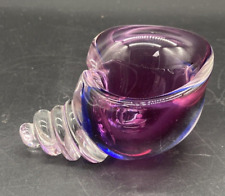
BEAUTIFUL VINTAGE ALEXANDRITE? ART GLASS "SHELL" Votive, SALT CELLAR $44.00
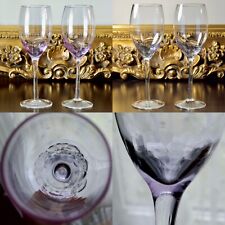
(2) Pair of Neodymium / Alexandrite Wine Glasses $79.99
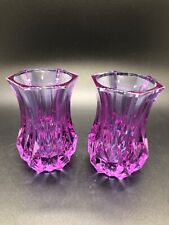
Two Neodymium Alexandrite Purple Glass Bud Vase Cristal D’Arques Small 3” $60.00
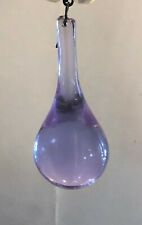
New: Vintage Alexandrite Lavender 2-1/4" Murano FAT Teardrop prism $15.00

2 Alexandrite Tanzanian 1/3ct Purple to Pink Natural Color Change Russia Handcut $329.99
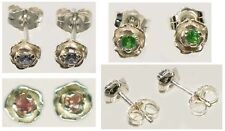
Alexandrite Rose Earrings Antique 19thC Russia Natural Handcrafted Color-Change $339.99
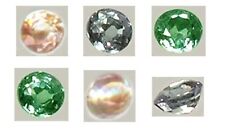
Alexandrite Antique 19thC Russia Natural 3½mm Color-Change Genuine Handcrafted $779.99
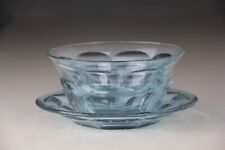
Vintage Moser Alexandrite Glass Bowl & Under Dish Signed-Glows $99.99
|